The Right Hand of Stroke
I am Bill’s right hand. Together we learned how to color, how to draw, and eventually how to write. We learned from every “nick” that we got while we shaved, and we blushed as we held the hand of our very first girlfriend. Together we shared all of the hard times, all of the fantastic memories, and all of the inappropriate stories that one might expect from a life as full and as active as ours was. We cradled our baby children and we comforted our wife. Throughout our career as a public speaker, realtor, and college professor, we worked in unison. It never occurred to us that this connection, that had always been so effortless, could be broken. It wasn’t until our connection was abruptly interrupted on April 17, 2009 that we were able to appreciate what we had lost. Bill says he died that day. This was the date that marked the beginning of our journey to re-establish our bond, which had been so important to who we were.
The last thing that I was able to do for us before our connection was interrupted was to signal for help when Bill lost his balance, could not see straight, and when his voice failed him that fateful day seven years ago. We knew that his daughter was in the house, and she would help if we could get her attention. We managed to knock everything off of the bedroom dresser, creating a huge racket, before we crumpled in a heap to the floor. I could sense Bill trying to get me to do more, but I was unable to respond, There was nothing more that I, Bill’s trusty right hand, could do, in our hour of need. With his daughter alerted, a new fear sprung to mind and shot down to the tips of our fingers. I felt Bill summon everything he could muster to crawl, one hand, one leg, to block the door.
“I don’t want my daughter to see me die,” I could still sense Bill’s frantic thoughts.
When we heard her say that she had called her brother, everything calmed.
“That was my purpose. Get someone else to help her, to be with her” Bill thought.
When the paramedics arrived, we heard everything: sirens, commotion, frenzied voices telling Bill to relax. This was strange since in our mind, we were completely calm. However, the scars from the restraints they had to use to get us to the hospital tell a different story. We did not let go of our bond so easily, this precious connection between mind and body. But neither him nor I were in control. And so we resisted the paramedics all the way to the hospital, without either of us knowing it.
When we arrived to the community hospital, we could hear all of the doctors, technicians, and nurses. We heard when the doctors encouraged his wife to accompany us on the “life flight” to a larger hospital in the city. They didn’t think Bill would survive the trip. Before we found out what had actually happened–that we had suffered a massive hemorrhagic stroke on the left side of our brain–Bill remembers seeing his wife crying. He saw the anguish quickly spread across her face, and to this day he will tell you that one of the hardest things about having a stroke was seeing his family’s grief. He kept trying to tell them that everything would be ok, but he could not. He could not speak. He wanted me to reach out to them, to comfort them. But I could not. So I stayed there, lying limp by his side.
Bill was upset that he could not control his muscles like he used to, but he was most upset he could not speak. When one of the doctors asked his wife if Bill had a living will for organ donation, Bill tried to scream out to him: “I am still using my organs! I need all of my organs right where there are!” But nothing came out, and no one heard him. Then the doctor asked his wife about Do Not Resuscitate orders. “Yes! Please! Resuscitate me!” Bill begged them silently. His wife consulted his children. I sensed the fear and confusion that Bill felt, and it was startling. Not only did we not know what was going to happen to us, we could not even tell the people we loved most that we were still present, we were not lost yet. Bill decided while we were still in the hospital that we would find a way back to his family, to himself, and to his life.
We felt our first sense of relief upon leaving the hospital, and meeting our Occupational Therapist, Cindy Clark. In addition to the support of Bill’s wife and family, Cindy was part of a group of dedicated rehabilitation professionals that would guide us our on journey, and help us reclaim our connection with each other. They would help us relearn everything that the stroke had erased. When we met Cindy, we were eager to get to work. Work is what we were good at after all, before the stroke. When Bill could not get me reach out to Cindy for help, she took us in her own hands and showed us step by step, how to do the things that we had forgotten. It was slow, clumsy work at first. We had no sensation at all from our shoulder down to our fingertips on the right side. Fine motor skills, which once had come so naturally, now became painstaking work. As far as I could tell, Bill had forgotten about our right side all together. We would frequently bump our right shoulder and arm into walls and cabinets; unaware of the bruises this would cause. Cindy helped bring Bill’s attention back to his right side and to his right hand. And slowly, I began to respond, at least somewhat, to what Bill wanted to do.
We did everything the therapists wanted us to do in the clinic. Once we had exhausted the typical exercises, we wanted more. So Cindy signed us up to participate in a community run. We thought this was strange since Bill had never really run before the stroke. He seemed to enjoy it however, as we began training for a marathon after we completed that first race. Then Cindy told Bill that she wanted us to throw out the opening pitch at a local baseball game. Though we both thought that she was crazy, we practiced. And practiced. And every day that we practiced we could feel our connection grow a little stronger. Cindy taught us, hand over hand, how to hold the ball and when to let it go. Eventually we re-mastered the sequence. I was surprised that when the time came, as we stood alone on the pitcher’s mound, we did not feel fear, but pride, for having made it this far. Somehow we managed to let the ball loose, just as we had learned.
I was with Bill as he enlisted the help of teachers and voice coaches, and as he began to seek out other activities that might help us rediscover our sense of self. It took one whole year before Bill was able to speak again, and then aphasia made getting his words out challenging. We decided to spend six months with an artist friend in San Pedro, Mexico. Two days a week, we taught English to locals. This is how Bill began to reclaim his words.
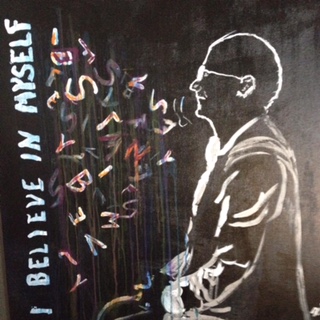
While we were in Mexico, we started painting. Bill forced me to do the work, which was new to both of us. He forced me to hold the brush and to follow the lines that he set out. I squeezed cyan, magenta, whites and blacks out of their tiny tin tubes and mixed color after color on the pallet. He did not let me rest by his side, though it would have been much easier for us. When we got back to Cleveland, Bill bought an easel and befriended a local artist who began teaching us about painting. And then painting became our routine. It became our motivation and stress relief. It was something to look forward to, and something that showed us how far we had come.
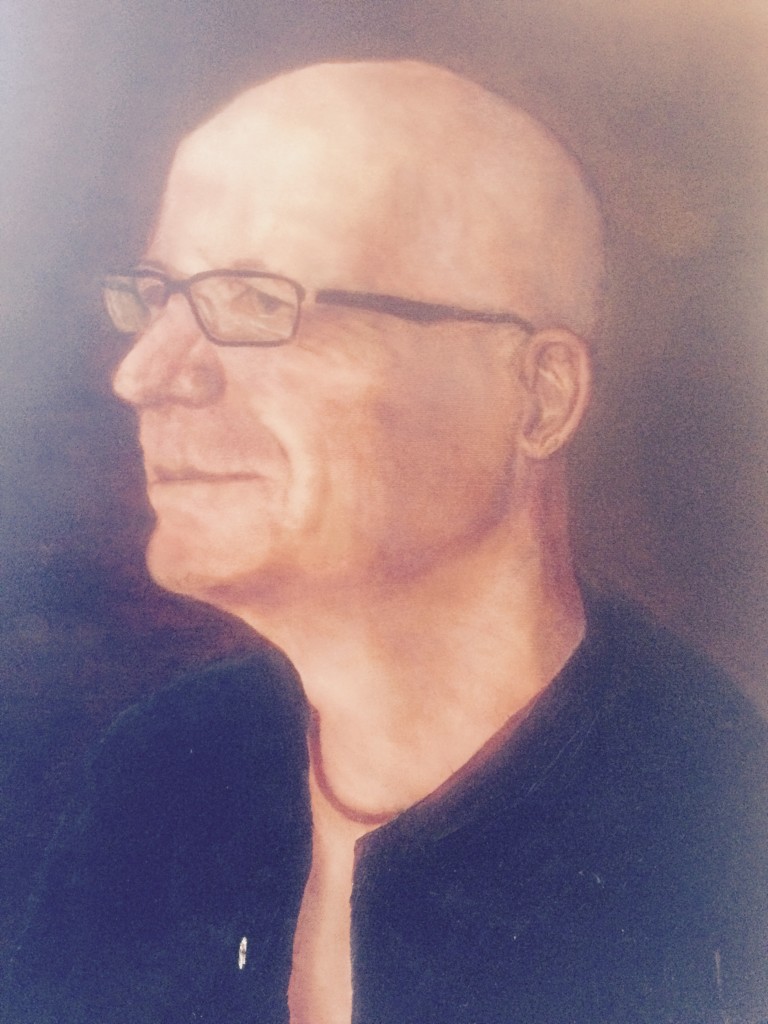
While painting, something strange happened. We would start with the darkest darks and the lightest whites. In bringing together these extremes, Bill began to find himself on the canvas. Through self-portrait after self-portrait, an image of being became clear to us both. We were artists now. Life was simple now. This activity, which seemed so superfluous to Bill before the stroke, allowed us to continue to work on regaining strength, coordination, and control of our muscles. It made it easier for Bill to formulate his words and speak his mind. Bill reached into himself to recover. In delineating his profile on the canvas, he allowed his true self, his NEW self, to come into being. Now we are working again. We have been commissioned for landscapes and portraits from customers who really like our work. I wonder though, every time someone likes our paintings or asks to purchase one, if they realize the journey that we–Bill and his right hand–went through to get to where we are now. The paint on the canvas is satisfying, but somehow the real work of art seems to be this new person who created it. The real masterpiece being this person who died on August 17, 2009 and was reborn through his art. |
The Right Hand of Therapy
I am Cindy’s right hand. Together we learned how to color, how to draw, and eventually how to write. We wrote papers and reports through college and applied to graduate school. Now as an occupational therapist, I am Cindy’s instrument of change as we work with stroke patients in Cleveland, Ohio. We encourage, we console, we comfort, we motivate, and even now, as an experienced clinician, we are surprised to realize how much we learn with each patient that we work with. Throughout our schooling, we always felt that there was so much more knowledge to be gained from a course, a journal article, or a textbook. In fact, we were driven to squeeze every drop of knowledge out of these empirical resources as we could, and we suffered all the cramps and callouses from taking notes to prove it. While we were focused so intently on the clinical outcomes of our patients, we didn’t realize that we were learning from each patient’s experiences along the way. Each patient we worked with would inevitability pave a new course for how we approached treatment with the next patient. So when we saw Bill Forester’s name on our caseload, we did not expect that his treatment would reveal anything new to us. From reviewing his chart and looking at his brain scan, which showed a massive left hemisphere hemorrhagic stroke, we formed general expectations for his plan of care. Left hemisphere stroke likely results in difficulty with language in addition to right-sided paresis and dis-coordination; we already had general interventions and goals in mind that we could start with.
When we met Bill, he walked into the clinic with confidence and a half smirk on his face (since his stroke affected his smile and the very sensation of a smile). Our first mission was to get a feel for the patient. He appeared bright eyed and motivated for what was to become an excellent recovery. I could sense Cindy’s thoughts as she observed that he was walking well but that he kept his right arm behind him, as if unaware of where he had parked it. Cindy had me reach out to him, and we took his right hand in ours and began to assess how the stroke had affected him. He had severely impaired proprioception and poor motor skills. He was unable to lift his arm or reach for and grasp an object with his right hand. So we had to demonstrate and show him, our hands on his, how to reintegrate this part of his body back into himself. Though he was not able to speak, it was easy to tell that Bill had an indefatigable personality and strong sense of humor. So that’s where we started. We learned about what Bill had done before his stroke, and set small but achievable goals that would guide us through various interventions.
Cindy and I would make Bill walk with us to the coffee stand where the barista, Tim, would give him a cup so that he could pump the aromatic Arabica from the thermos at the self serve station. Tim quickly learned that we expected Bill not only to “order up” his own coffee using his reforming communication skills, but that he had to use his right hand to fill his cup full of that deliciously fragrant coffee. There were blunders of speech and many spills requiring many napkins. Lines sometimes formed behind us and people had to wait. Both Bill and Cindy were determined though, and this never bothered them. They would joke about the mishaps and resolved to do better the next day. Cindy had me always at the ready; available to hold hot “cups of joe” while spills were sopped up, and to prevent Bill from using his left (more functional) hand for the task. Our job was clear; we encouraged Bill through each failed attempt, applauded the successes and supported him when his disconnection between mind and body seemed too much to overcome. Over time and with practice, Bill got better at this seemingly simple task. The coffee from that stand always seemed to taste the best knowing the work that had gone into getting it. As he progressed through therapy, he challenged us to give him more difficult tasks and home practice to improve the strength and coordination with his right hand.
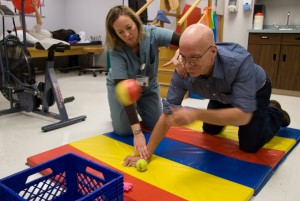
“OK,” I could sense Cindy thinking, “if this guy wants to get more involved, let’s get him more involved.”
So I helped Cindy make some calls and we signed Bill up for a 5k community run. We would run it with Bill, and we would be by his side to help him along the way, if he needed it. We could tell that he was hesitant, so we remained steadfast and encouraging. Sometimes we pushed him; sometimes we were the hand on his shoulder steadying him. We reassured Bill that even though his legs felt weak that they would get him through the run, and he would be stronger for it. When the day came, we were there by Bill’s side, but he was the one who took each step that got him to the finish line. And when we crossed that line together, we shared that moment of accomplishment as a team and as friends. I don’t think that Cindy was surprised that Bill completed the run. She might have been surprised however in his interest to train for a marathon at the end of the year because of this first race. He took all of the tasks that we handed him and ran with them. He was challenging us to find new and creative ways to help him reestablish those connections that the stroke had diminished.
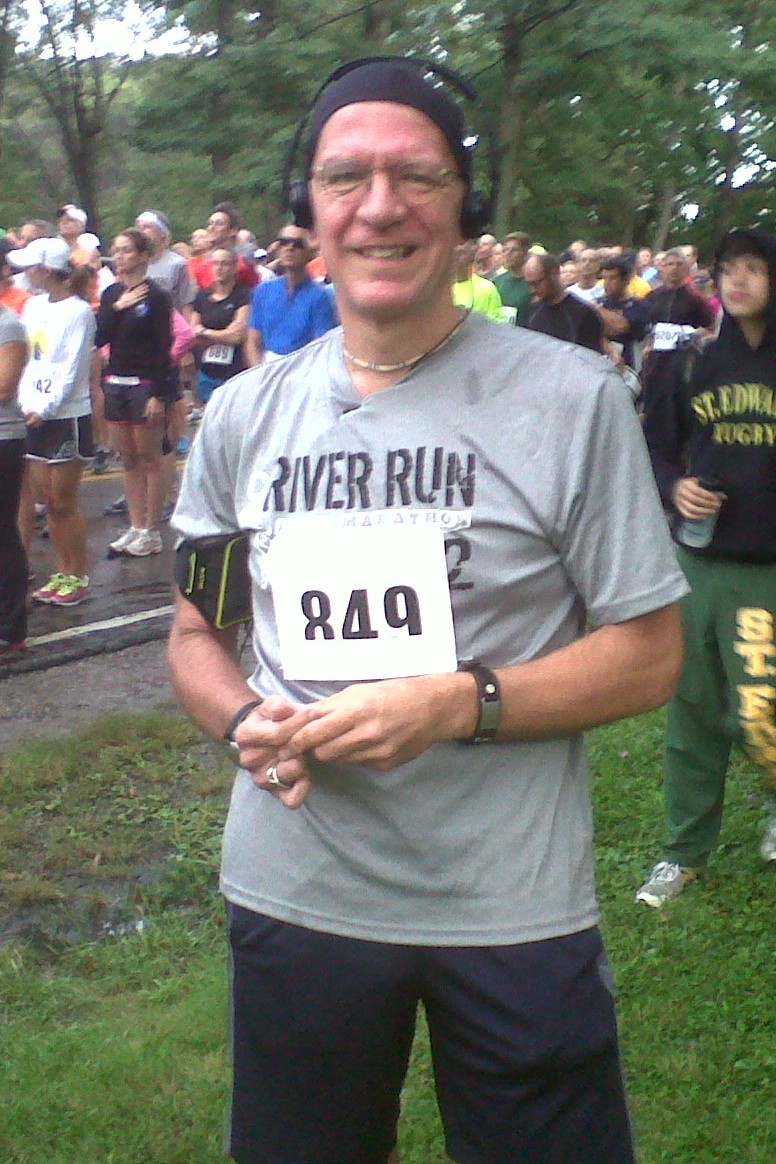
“Well, he did so well with that one, let’s keep pushing him,” I sensed Cindy’s mind work.
We made a few more calls and arranged for Bill to throw out the opening pitch in a local baseball game. Everyone was supportive once they heard what Bill had been through so it was not a difficult task to arrange. Again, we could sense the reluctance from Bill. It’s funny how much you can communicate with someone even when they can’t speak very well. So we began to practice. It was slow and clumsy work at first. We took his right hand in ours and we helped him relearn how to hold the baseball. There were so many frustrations. His hand resisted but his spirit was tireless. We tried to match his gregarious personality and constant striving to be able to do more with novel strategies that required him to find original solutions to each problem he encountered. We got him used to the weight and texture of the ball and we guided him through the motions over and over again. We started to see Bill improve. We were able to back off to where we guided him from his shoulder, and then we were only there for occasional balance checks. When the day came, Cindy and I supported Bill from the sideline. Again, Bill would have to take this last step on his own. Bill seemed surprised that he was able to make the throw correctly. We thought it was inevitable. In his case at least, hard work had paid off.
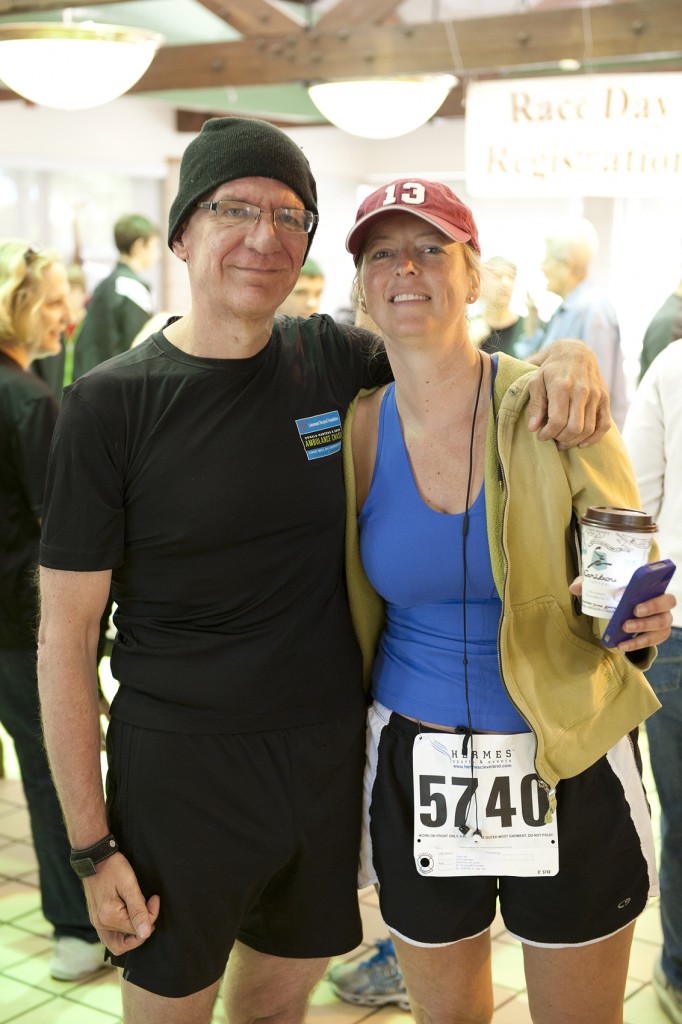
Bill was a unique patient who challenged us to deliver dynamic rehabilitative interventions beyond what we had read about in our textbooks. We helped him nurture the critical connection between his mind and body that his stroke had interrupted. In doing so, we formed a strong bond of our own between patient and therapist. He opened our eyes to the challenges that stroke survivors experience at home and during each step of the long recovery process. We saw him struggle with his inability to return to the work that had meant so much to him before the stroke and we were with him as he re-evaluated his next steps in life. We guided him as he confronted his inabilities following the stroke and supported him as he found the capacity to create and live as an artist and a painter. Anyone that meets Bill will recognize his kind spirit and affable determination. Most likely they will marvel at his enthusiasm for life and his perseverance in all tasks great or small. Cindy and I, for our part, will carry the lessons that we learned from Bill to all of our future patients. The most important lesson perhaps, that we allow ourselves to be open to learn with and from our patients as we take their hands in ours and guide them back to themselves. |
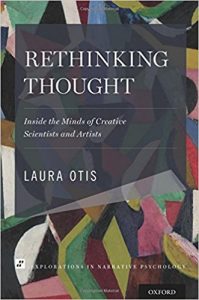 My experience as a patient reminded me of the discoveries I made when I conducted my own research on how thinking varies. From 2009-2011, I interviewed 34 creative people to learn how the process of thinking felt to each one of them. The participants included scientists, poets, novelists, painters, designers, a singer, and a flamenco dancer. Among them were engineer Temple Grandin and novelist Salman Rushdie. I asked questions such as “Do you see anything when you read?” “What senses predominate in your memories?” and “What’s the hardest thing you ever had to learn?” I aimed not to classify people as “visual” or “verbal,” but to help readers understand what it felt like to live in each person’s head, almost as a novelist encourages a reader to inhabit a character. To provide background information, I interwove verbal portraits of the participants with descriptions of recent studies on visual mental imagery and the relationship between language and thought. I tried to create a dialogue in which creative people’s insights and scientific findings challenged each other as equal partners, as two different but equally valid forms of knowledge. The results have been published in Rethinking Thought: Inside the Minds of Creative Scientists and Artists.4
My experience as a patient reminded me of the discoveries I made when I conducted my own research on how thinking varies. From 2009-2011, I interviewed 34 creative people to learn how the process of thinking felt to each one of them. The participants included scientists, poets, novelists, painters, designers, a singer, and a flamenco dancer. Among them were engineer Temple Grandin and novelist Salman Rushdie. I asked questions such as “Do you see anything when you read?” “What senses predominate in your memories?” and “What’s the hardest thing you ever had to learn?” I aimed not to classify people as “visual” or “verbal,” but to help readers understand what it felt like to live in each person’s head, almost as a novelist encourages a reader to inhabit a character. To provide background information, I interwove verbal portraits of the participants with descriptions of recent studies on visual mental imagery and the relationship between language and thought. I tried to create a dialogue in which creative people’s insights and scientific findings challenged each other as equal partners, as two different but equally valid forms of knowledge. The results have been published in Rethinking Thought: Inside the Minds of Creative Scientists and Artists.4

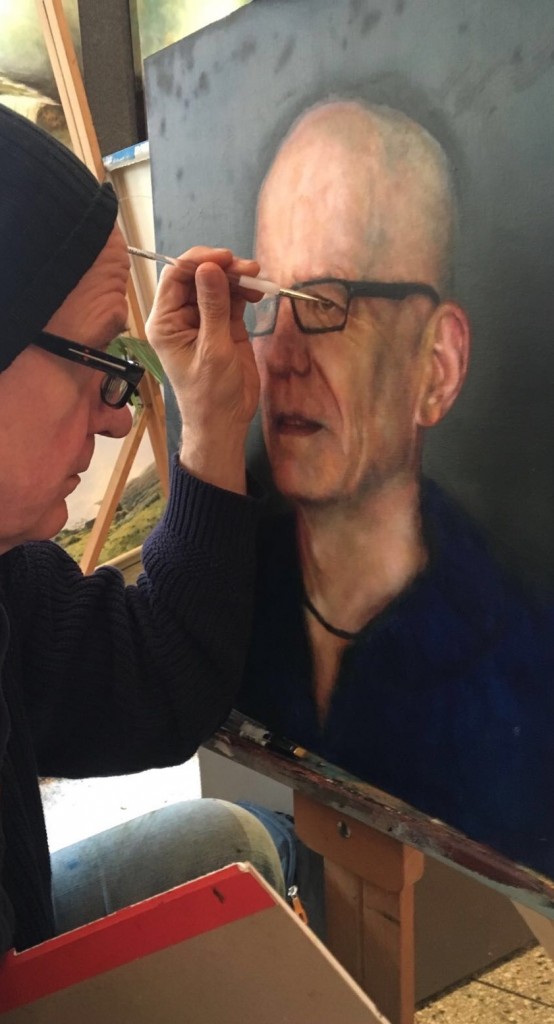 In 2009, Bill Forester became one of the 790,000 people in the United States to suffer a debilitating stroke. He was also a part of the two thirds of this group that required rehabilitation services1 to recover some of their previous independence. A stroke survivor’s experience with rehabilitation is undoubtedly affected by their ability to cope with the sudden change to their life plans, expectations, and self-identities. Bill Forester’s experience of rehabilitation, and his discovery of latent artistic talents, clearly highlights the ability of the human brain to adapt following a stroke. His story also reveals the capacity of the human spirit to grow through nurturing relationships with family, therapists, and even accidental friends. Bill discovered his unique potential for rehabilitation through the guidance of those around him, but it was his unyielding motivation to recover what he had lost that allowed him to discover a part of himself that he had never suspected.
In 2009, Bill Forester became one of the 790,000 people in the United States to suffer a debilitating stroke. He was also a part of the two thirds of this group that required rehabilitation services1 to recover some of their previous independence. A stroke survivor’s experience with rehabilitation is undoubtedly affected by their ability to cope with the sudden change to their life plans, expectations, and self-identities. Bill Forester’s experience of rehabilitation, and his discovery of latent artistic talents, clearly highlights the ability of the human brain to adapt following a stroke. His story also reveals the capacity of the human spirit to grow through nurturing relationships with family, therapists, and even accidental friends. Bill discovered his unique potential for rehabilitation through the guidance of those around him, but it was his unyielding motivation to recover what he had lost that allowed him to discover a part of himself that he had never suspected.




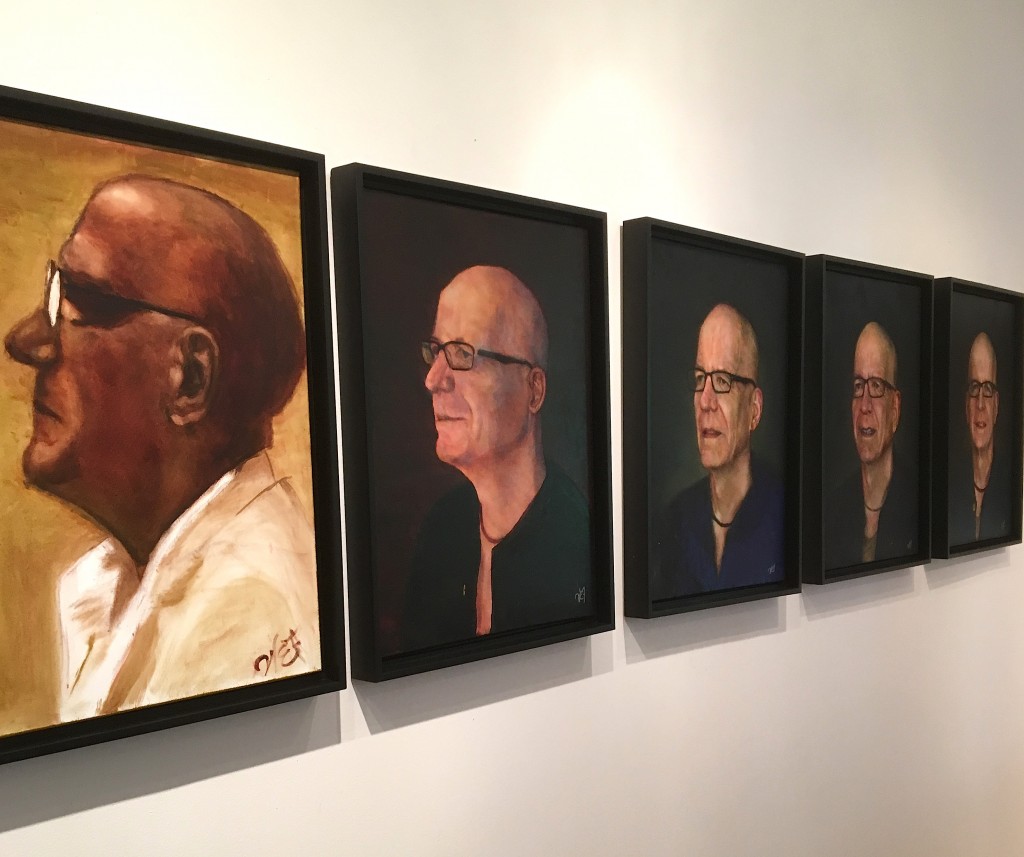
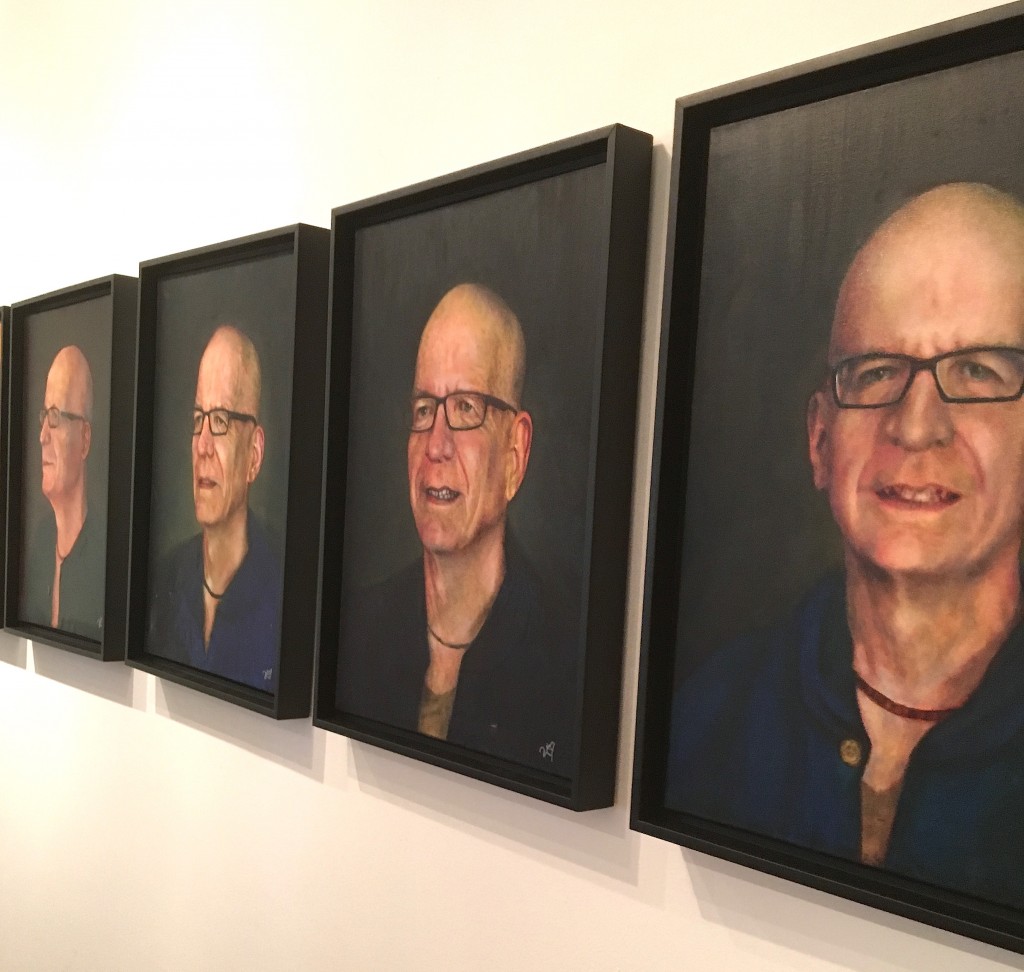

 Member since 2019 | JM14274
Member since 2019 | JM14274


NO COMMENT